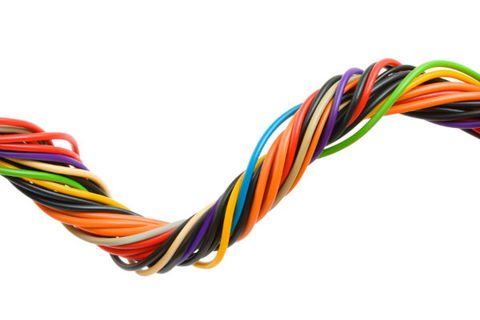Easy install, wireless solutions can certainly make a home smarter, but a fully integrated “smart home” requires a more sophisticated approach. Here’s why you should add structured wiring installation to your skillset.

If you have been thinking about becoming a smart home installer, then now is a great time to start.
According to The Future of Smart & Connected Homes 2015 report by Frost & Sullivan, 41% of UK homeowners currently have some form of connected technology installed in their home. The report also predicts that by 2020 there will be 10 connected devices per household
What’s more, with the availability of consumer-focused devices like Amazon’s Alexa voice assistant and Philips Hue lighting and Samsung’s SmartThings products, more and more consumers are becoming aware of ways they can start connecting to their homes.
The limitations of wireless
Whilst it is great that simple wireless devices like these are capturing the imaginations of homeowners, they offer a limited version of what a professionally installed smart home can be. These devices tend to only interact with other others that use the same protocol (Wi-Fi, Bluetooth ZigBee etc.) and depend on a consistently strong signal and a hub to communicate. Also, depending on the fabric and layout of the house, the performance of wireless - especially multi-room audio – systems can be limited.
We asked CEDIA’s Training Manager, Simon Buddle, to comment on the limits of wireless networks:
“Wireless is great for phones, iPads and maybe a bit of YouTube streaming but did you know that microwaves work at the same frequency? Zap a jacket potato and you’ll also be causing chaos with the Wi-Fi signal. “
Simon also identified other potential wireless disruptors found around the home:
“I’ve bet you’ve seen foil backed plasterboard and insulation used in pretty much every new build you’ve worked on recently, that’s another problem for wireless. It effectively creates a Faraday cage that drastically reduces the signal strength and, in some cases, may actually prevent it going from one room to the next.”
Install some cable
Demand for fully integrated smart homes is still in its infancy and there is definitely a place for simple wireless solutions to kindle that fire. However, if you really want to profit from the smart homes market you should turn away from the easy-to-install wireless devices and offer a reliable integrated system that is bespoke to the customers’ demands.
How do you achieve this? Well Simon’s answer is: “Install some cable”.
“Electricians are already wiring standard electrical cabling. Doing a bit of training so you can add in some structured cabling for data and TV, such as those in the CEDIA Recommended Wiring Guidelines or the newly published BSI PAS35491 is a simple step. This will reap benefits for the home owner and, importantly, add a bit to the businesses bottom line”
Why go wired?
Wired systems like KNX, Insteon and X10 allow for more complex integration and control in a smart home. KNX, for example, is an open protocol system with over 450 manufacturers. It can be used to control and integrate lighting, HVAC, shading and metering and it allows installers to offer a scalable, future-proof system that clients can easily build on and add to in the future.
As Iain Gordon, the KNX UK President puts it: “The structured network of any installation is the backbone for communications of all kinds. Having a high quality, well-provisioned copper cabled network as a minimum, ensures high-speed transfer and the flexibility that is essential for the future of buildings.”
Learn to earn
Providing value in the smart homes market is a lot like being a tailor. As with suits, there are lots of off-the-peg, wireless devices out there that do a “good enough” at making a home smarter. The thing is, these products can be installed by anybody and there’s only so much you can do in the way of integration with other devices and systems.
A tailored smart home, installed by a trained professional, can offer a fully integrated and reliable solution that fits perfectly around the client’s needs and is scalable for additional functionality in the future.
Why offer the Marks & Spencer version when, after a few days on a course, you can deliver Savile Row quality instead?